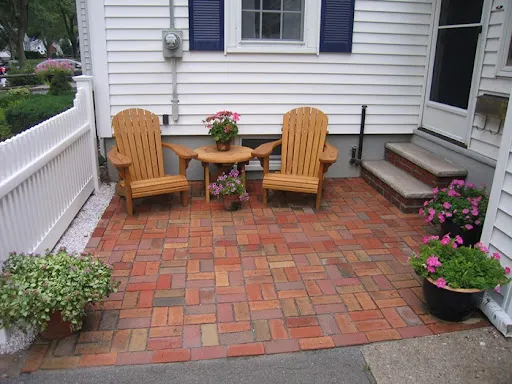Florida’s warm, humid climate, frequent rain, and occasional hurricanes can damage outdoor masonry, especially brick patios. Without proper maintenance and protection, your beautiful brick patio can suffer from mold growth, discoloration, cracks, and shifting due to extreme weather conditions.
Looking for expert brick patio installation or repair? Contact the best masonry contractor in Bradenton, FL, for reliable solutions.
Best Brick Patio Services in Bradenton, FL
📞Call: (941) 347-4170
📧Email: contact@bradentonmasonryfl.com
Why Maintaining Your Brick Patio Is Important
A well-maintained brick patio not only increases the beauty of your outdoor space but also:
- Prevents costly repairs.
- Increases lifespan.
- Adds value to your home.
- Ensures safety by preventing uneven surfaces and tripping hazards.

How to Maintain a Brick Patio
1. Regular Cleaning to Prevent Mold and Mildew
Mold, algae, and mildew can grow on brick patios due to Florida’s humidity. To keep your patio clean:
- Sweep your deck regularly to remove debris and prevent buildup.
- Use a garden hose or pressure washer (on a low setting) to wash away dirt and grime.
- Apply a mixture of water and mild dish soap to scrub stubborn stains.
- Use a commercial brick cleaner if you notice mold or mildew growth.
2. Sealing for Weather Protection
Sealing is one of the best ways to protect your outdoor space from rain and humidity. A good sealer:
- Prevents moisture absorption, reducing the risk of mold and cracks.
- Enhances the color and appearance of the bricks.
- Protects against stains from leaves, spills, and outdoor elements.
3. Repairing Cracks and Loose Bricks Promptly
Over time, Florida’s heavy rains and heat can cause your bricks to shift or crack. If you notice any damage:
- Remove loose or damaged bricks and replace them.
- Fill cracks with polymeric sand to prevent weeds from growing.
- Contact a local contractor if the issue requires professional repair.
4. Preventing Weed Growth Between Bricks
Weeds growing between bricks can ruin the look of your backyard and cause structural problems. To prevent this:
- Use polymeric sand to fill gaps between bricks.
- Regularly pull out any small weeds before they spread.
- Apply a natural weed killer, such as vinegar or boiling water, for stubborn growth.

5. Protecting Your Patio from Heavy Rain and Flooding
Excessive rain can lead to water pooling on your deck, which can weaken the foundation. To prevent this:
- Ensure proper drainage by grading your porch slightly away from your home.
- Install a French drain or permeable pavers to improve water flow.
- Regularly check for signs of erosion and repair areas that collect water.
6. Keeping Your Patio Cool and Preventing Heat Damage
Florida’s intense sun can heat up brick patios, making them uncomfortable to walk on and causing fading. To reduce heat damage:
- Use outdoor rugs or umbrellas to provide shade.
- Consider applying a UV-resistant sealant.
- Plant nearby trees or install a pergola to create shade naturally.
7. Preparing for Hurricanes and Strong Winds
Since hurricanes frequently hit Bradenton, it is essential to protect your outdoor space.
- Secure any loose furniture before a storm.
- Inspect bricks and mortar joints for damage before hurricane season.
- Use heavy-duty outdoor sealers to prevent moisture penetration during storms.
8. Scheduling Professional Inspections and Maintenance
Even with regular care, having a professional contractor inspect your brick patio can help catch early signs of damage. Bradenton Masonry Contractor offers expert inspections, repair services, and maintenance solutions to keep your outdoor space in top shape year-round.
Call now to Get A Free Quote!
Contact Details:
📞Call: (941) 347-4170
📧Email: contact@bradentonmasonryfl.com
Frequently Asked Questions (FAQs)
How often should I clean my brick patio?
It’s best to sweep and rinse weekly and perform a deep clean every few months.
What type of sealer is best for Florida weather?
A breathable, water-repellent sealer is ideal for humid climates like Florida.
How do I fix sun-faded bricks?
Applying a UV-resistant sealer can help restore the color and protect against further fading.
What should I do if I notice cracks in my patio?
Small cracks can be filled with polymeric sand, but for extensive damage, call (941) 347-4170 for professional repairs.
Does sealing my patio make it look shiny?
Sealers come in different finishes, including matte, semi-gloss, and high-gloss. Choose one based on your preference.



